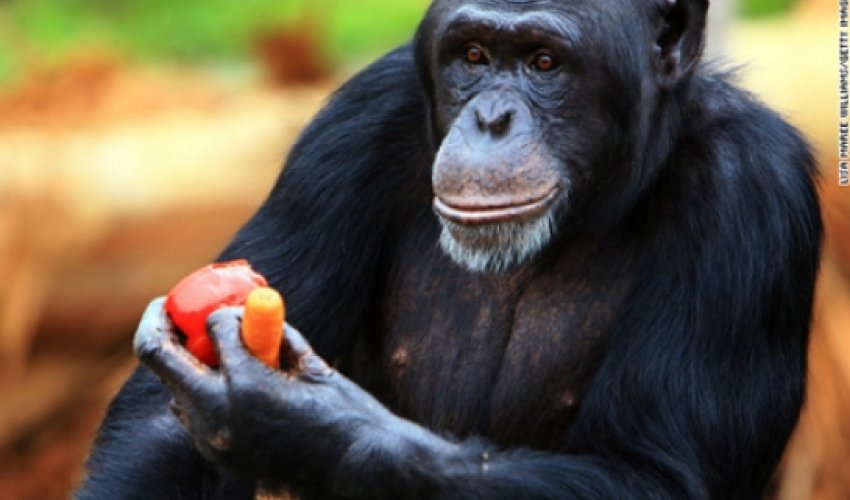Are we really different from animals?

Thomas Suddendorf is a professor of psychology at the University of Queensland and a fellow of the Association for Psychological Science. He is the author of "The Gap: The Science of What Separates Us From Other Animals."We humans tend to think of ourselves as better than, or at least separate from, all other species on this planet. But every species is unique, and in that sense humans are no different.Nevertheless, it seems obvious that there is something extra special about us -- after all, we are the species running the zoos. In "The Gap," I survey what we currently do and do not know about what exactly sets humans apart.What are the physical differences that distinguish us from our closest animal relatives?There are some notable ways in which our bodies differ from those of apes and old-world monkeys. We can lock our knees straight, have longer legs than arms, and habitually walk upright, freeing our hands to do things other than carry our weight.We have a chin. Our body surface is covered in sweat glands that provide a more effective cooling system than those of other primates. We have lost our canines and much of our protective fur -- leaving males with the apparently pointless, but persistent, growth of beards.The iris of our eyes is relatively small and surrounded by white rather than dark sclera, making it easy for us to identify the direction of another's gaze. Human females show no outward markers of their fertile phase, and human males lack a penis bone.These are not exactly groundbreaking traits, compared to, say, the emergence of wings in birds, which catapulted their bearers into a new sphere of possibility. Yet despite the paltry list of distinct physical attributes, we have managed to seize control of much of the planet. It is widely assumed that the reason for this has to do with our big brains.Do humans have the largest brains?No. Humans have large brains, weighing between about 1.25 and 1.45 kilograms, but elephant brains can weigh more than 4 kilograms, and whale brains as much as 9 kilograms. Elephants and whales also have the biggest bodies in general, so it may be considered fairer to compare our relative brain sizes.Our brains represent about 2% of our overall body mass (though they consume some 25% of our energy), whereas the brains of elephants and whales constitute less than 1% of their bodies. Nevertheless, the outcomes of relative size comparisons have also not been supportive of humans' sense of superiority. Some shrews and mice, it turns out, have brains that are up to five times larger than ours relative to body size.Since we get beaten by large mammals in terms of absolute brain size and small mammals in terms of relative brain size, another type of comparison has been proposed that takes into account that as mammals get larger, brains get absolutely larger but relatively smaller.In this scheme, at last, humans emerge on top, with a brain more than seven times larger than that predicted for the average mammal of our size (and dolphins are runners up with five times the expected value). Yet it remains uncertain whether this or any other brain comparisons have so far unearthed some hidden truth, or whether we are primarily using statistics to support our presumptions. We are only beginning to unravel the mysteries of brains and how they generate our peculiar minds.So what are the differences that enabled us to dominate the planet?In my book, I examine the most common proposals about what sets us fundamentally apart from the rest: language, foresight, mind-reading, intelligence, culture and morality.On inspection it becomes clear that various animals, in particular our closest animal relatives, the great apes, have some sophisticated capacities in even these domains. Nonetheless, the human ability in each of these contexts is special in certain respects. Two characteristics in particular keep re-emerging as critical: our deep-seated drive to exchange our thoughts, and our ability to think about alternative situations and embed them into larger narratives.Humans rely on a uniquely flexible, but also risky, way to control behavior through clever thinking. We can travel mentally in time and consider how events unfolded or what the future might hold. We can compare alternative routes to the future and deliberately select one plan over another -- giving us a sense of free will and an edge over creatures with less foresight.This also burdens us, however, with the responsibility for getting it right. The future is uncertain and, of course, we often get it wrong.The key to making this a successful strategy has been our fundamental urge to link our minds together, to look to one another for useful information. We ask questions and give advice. We bond through sharing experiences. We can use our imagination to entertain the perspectives of others as well as to consider entirely fictional scenarios.This allows us to take advantage of others' experiences, reflections and imaginings to prudently guide our own behavior.These two attributes appear to have been essential to our ancestors' transforming common animal traits into distinctly human ones -- communication into open-ended language, memory into strategic planning and social traditions into cumulative culture. Our extraordinary powers do not derive from our muscles and bones, but from our collective wit. Together, our minds have spawned civilizations and technologies through which we have changed the face of the Earth, while even our closest animal relatives live quietly in their dwindling forests.Why only us?If these traits are so useful, you may rightly wonder why other creatures did not evolve them, too. As it turns out, other creatures did -- but they have gone extinct. The gap between humans and other creatures on this planet previously was not as vast as it is today.Chimpanzees and other apes have not always been our closest living relatives. Some 40,000 years ago, we still shared this planet with several smart, upright-walking, stone tool-carrying cousins, including Neanderthals, Denisovans and the "Hobbits" of Flores.Go back further to around 2 million years ago and there were three distinct genera of hominins (Australopithecus, Homo, and Paranthropus), each likely comprising several species. Though there are debates about how many species need to be distinguished, it is clear that for much of our past our ancestors were but one of a group of diverse hominins.A gap is defined by both its sides: We appear so different from other animals because all our closest relatives have become extinct. And our ancestors may well have contributed to their fate.Note that all our closest animal relatives today, the apes, are endangered because of human activity. They may eventually join Neanderthals and Paranthropus as half-forgotten creatures of the past. And so, if we do not manage to stop this from happening, our descendants may be even more baffled by their own apparent uniqueness.(CNN)ANN.Az
Similar news
Similar news
Latest news 
More news 



































 Photo
Photo 



 Video
Video 

